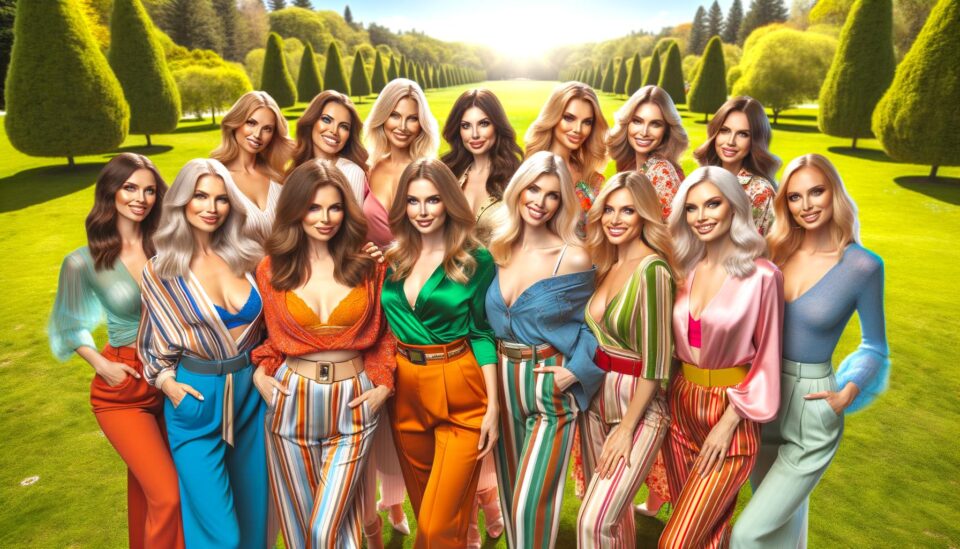The body positivity movement has taken the world by storm, challenging traditional beauty standards and promoting self-acceptance. At Global Positive News Network, we’ve observed how this powerful shift has influenced fashion, media, and personal well-being.
Social media platforms have amplified the message, while celebrities and influencers have lent their voices to the cause. However, the Daily Mail’s coverage of body positivity has sparked debates about health concerns and societal implications, highlighting the complex nature of this evolving movement.
The Body Positivity Revolution
Roots of a Movement
The body positivity movement has reshaped societal norms and challenged long-held beauty standards. This revolution didn’t happen overnight; years of grassroots efforts and social media amplification fueled its recent surge.

Body positivity’s modern incarnation traces back to the 1960s fat acceptance movement. However, it gained significant momentum in the early 2010s with social media’s rise. Influencers like Tess Holliday and Ashley Graham became powerful voices, using their platforms to promote self-love and challenge traditional beauty ideals.
Social Media: A Catalyst for Change
Platforms like Instagram and TikTok proved instrumental in spreading the body positivity message. A study analyzed 640 Instagram posts from popular body positive accounts, coding them for physical appearance-related attributes and central themes. This digital revolution allowed individuals to see diverse body types represented in ways traditional media often failed to do.
Fashion Industry Transformation
The impact of body positivity on the fashion industry has been profound. Brands now expand their size ranges and feature models of diverse body types. Aerie’s #AerieREAL campaign (which features unretouched models) led to a 38% increase in comparable sales in the first quarter of 2018. Similarly, Rihanna’s Savage X Fenty lingerie line received praise for its inclusive sizing and diverse representation in runway shows.
Beauty Industry Shifts
The beauty industry has also seen significant changes. Companies like Dove led the way with their “Real Beauty” campaign, launched in 2004 (ahead of its time) and continues to promote body acceptance. More recently, makeup brands expanded shade ranges to be more inclusive of all skin tones, with Fenty Beauty’s 40-shade foundation launch in 2017 setting a new industry standard.
While progress continues, challenges remain. Some critics argue that the commercialization of body positivity has diluted its message. Others point out that representation still falls short for certain body types and ethnicities. As the movement evolves, it faces new hurdles and opportunities in reshaping societal perceptions of beauty and self-worth.
Challenging the Body Positivity Movement
Health Concerns vs. Self-Acceptance
The body positivity movement faces criticism for potentially encouraging unhealthy lifestyles. Dr. Fatima Cody Stanford, an obesity medicine physician and scientist at Massachusetts General Hospital and a professor, warns about the dangers of celebrating all body types without considering health implications. She stresses the need to promote healthy behaviors alongside body acceptance.

A 2019 study in the journal Obesity revealed that individuals who internalized weight bias were more likely to engage in unhealthy eating behaviors. This finding underscores the complex relationship between body image and health outcomes.
The Commercialization Debate
Critics argue that brands have co-opted the body positivity movement for profit. Fashion psychologist Dawnn Karen points out that some companies use body positive messaging in marketing campaigns without making substantial changes to their product lines or business practices. This trend raises questions about the authenticity of corporate involvement in the movement.
Pushback from Traditional Beauty Standards
The body positivity movement encounters resistance from those who adhere to traditional beauty ideals. In 2018, Victoria’s Secret’s then-CMO Ed Razek sparked controversy by making remarks about trans and plus-size models. This incident highlighted the ongoing tension between evolving societal attitudes and entrenched industry norms.
Navigating the Debate
As the body positivity movement continues to evolve, proponents and critics grapple with its implications for health, commerce, and societal norms. The movement faces the challenge of promoting self-acceptance while addressing legitimate health concerns. This ongoing debate sets the stage for an examination of how celebrities and media outlets (including tabloids like the Daily Mail) shape public perception of body positivity.
Celebrities and Media Shape Body Positivity Narrative
Star Power Fuels the Movement
Celebrities have become powerful advocates for body positivity, using their influence to promote self-love and acceptance. Lizzo, the Grammy-winning artist, has become a vocal proponent of body positivity. She regularly shares empowering messages with her millions of followers. Body image problems continue to be a topic of research and analysis in relation to celebrity influence and media representation.

Other influential figures like Jameela Jamil have taken a more activist approach. Jamil’s “I Weigh” movement encourages people to measure their worth beyond physical appearance. The movement has amassed over 1.3 million followers on Instagram. This platform has sparked conversations about body image, mental health, and societal pressures.
Tabloid Tactics and Body Positivity
While celebrities champion body positivity, tabloids often present a more complex narrative. The Daily Mail, known for its sensationalist approach, frequently reports on celebrity bodies in ways that can undermine the body positivity message. A 2023 analysis by Media Matters found that the Daily Mail published over 500 articles focused on celebrity weight gain or loss in a single year (often using language that reinforced harmful beauty standards).
However, the tabloid’s coverage isn’t uniformly negative. The Daily Mail has also featured stories celebrating body diversity and highlighting the positive impact of the movement. This dichotomy reflects the broader societal struggle to reconcile traditional beauty ideals with evolving attitudes towards body acceptance.
Shifting Narratives in Mainstream Media
Mainstream media outlets have gradually changed their approach to body image reporting. A 2022 study by the Pew Research Center found that positive portrayals of diverse body types in major news outlets increased by 27% between 2018 and 2022. This change reflects growing awareness of the impact media representation has on public perception and mental health.
The body positivity movement continues to evolve, and the role of celebrities and media in shaping public discourse remains significant. The increasing visibility of diverse body types and positive messaging in mainstream media suggests a gradual but significant shift towards greater acceptance and inclusivity.
Impact on Social Media Platforms
Social media platforms have become battlegrounds for body positivity discussions. Instagram, in particular, has seen a surge in body-positive content creators (with hashtags like #bodypositivity amassing millions of posts). These platforms allow individuals to share their personal journeys and challenge traditional beauty norms on a global scale.
However, social media also presents challenges. The constant exposure to curated images can sometimes reinforce unrealistic beauty standards. A 2021 study published in the Journal of Body Image found that while body-positive content can improve self-esteem, excessive social media use can still negatively impact body image.
Final Thoughts
The body positivity movement has challenged traditional beauty standards and promoted self-acceptance, but it faces ongoing controversies. The Daily Mail’s coverage of body positivity often reflects this complexity, highlighting both empowering aspects and potential health concerns. The movement must address challenges such as balancing self-love with health considerations and navigating commercial exploitation.

Increasing representation of diverse body types in media and fashion indicates a shift towards greater inclusivity. This trend can positively impact mental health and self-esteem on a broader scale. Media outlets, including tabloids like the Daily Mail, have a responsibility to present nuanced perspectives on body positivity and contribute to informed dialogue about body image and health.
At Global Positive News Network, we believe uplifting stories inspire positive change. The body positivity movement will continue to shape our cultural landscape. We can work towards a future where everyone feels valued and accepted, regardless of their body type or appearance.




